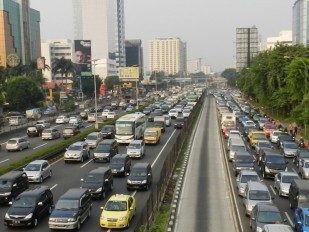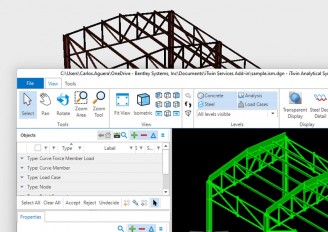
The Center for an Urban Future released a report yesterday titled Caution Ahead: Overdue Investments For New York’s Aging Infrastructure. The 68-page study estimates that New York needs to spend $47 billion over the next four to five years to improve its failing infrastructure to a state of good repair. The report states that while Superstorm Sandy brought attention and some much needed funding to certain parts of New York’s infrastructure, there are still many other infrastructure vulnerabilities that need to be addressed.
The 1,000 miles of water mains in New York average 400 breaks each year. Former New York Mayor Michael Bloomberg, who increased infrastructure spending throughout each of his three terms from 2002-2013, created PlaNYC in 2007 to address the city’s aging water mains. According to the plan, 80 miles of water mains were supposed to be replaced each year until the whole system had been replaced, but only 27 miles were replaced on average annually.
The current mayor Bill de Blasio assumed office in January of this year. There is not much hope that he will significantly increase spending on infrastructure improvements as he barely mentioned the topic during his campaign and short time in office. Although he has not yet announced his plan for dealing with the city’s decaying infrastructure, his new budget provides $3.3 billion less over four years for capital projects than his predecessor. According to Jonathan Bowles, executive director for an Urban Future, “There is a huge gap across the board between the backlog of the city’s capital needs and funding levels. The fiscal year 2014-2017 funding gap for the 18 city agencies, detailed in the Asset Information Management report, is $3.3 billion, while the capital backlog at CUNY is $2.5 billion, NYCHA $14 billion, the Port Authority roughly $3.9 billion and the New York City Transit division of the MTA, $10.5 billion. Capital needs across all these entities exceed committed funding by a staggering $34.2 billion."
The report provides several recommendations to address the New York’s infrastructure vulnerabilities. Mayor de Blasio is committed to creating more middle-income jobs to reduce the poverty rate in the city. The report recommends creating a sizable public works program that would create many blue-collar jobs. Another recommendation is to shift the spending focus from expanding the capacity of the current system to repairing aging assets. The report discusses creating new dedicated revenue sources to pay for the needed infrastructure projects rather than divert funds from other dedicated funding streams. The report, which can be found here, provides six pages of recommendations to take New York’s infrastructure into the 21st century. In addition to infrastructure, the report also focuses on schools, parks, homeless shelters, and health clinics.
Source: Crain's New York
Want to read more like this story?

New York Governor Outlines Sandy Rebuilding Plan
Jan, 09, 2014 | NewsNew York Governor Andrew Cuomo unveiled a plan recently to spend $17 billion in federal disaster aid...

U.S. DOT Warns of Need For Spending on Bridges and Roads
Mar, 05, 2014 | NewsThe United States Department of Transportation released its biennial conditions and performance repo...

US Infrastructure Spending Drops Dramatically Over Last 4 Years
Nov, 10, 2013 | NewsA new chart released by BCA, an independent investment research company, shows that infrastructure s...

Explosion in NYC Levels 3 Buildings
Apr, 08, 2015 | NewsAround 250 firefighters responded last Thursday after a gas main leak caused an explosion that demol...

Tappan Zee Bridge Funding Questions Remain
Mar, 27, 2014 | NewsWhile the first three piles for the Tappan Zee Bridge in New York have been completed, there are sti...

Jakarta’s Traffic Problems Expected To Worsen in 2014
Jan, 31, 2014 | NewsThe infrastructure and gridlock problems facing the city of Jakarta, Indonesia are expected to worse...

Illinois Governor Pat Quinn Unveils $8.6 Billion Infrastructure Improvement Plan
Apr, 11, 2014 | NewsIllinois Governor Pat Quinn unveiled his six-year, $8.6 billion infrastructure plan to improve roads...

"Introducing the Berkeley Center for Smart Infrastructure", part of "The future of Infrastructure today!" webinar series
Oct, 13, 2023 | EventLecture date: Friday November 3, 9:00-10:00AM PST The “Future of Infrastructure today!” is a mont...

US infrastructure scores a D+: more than $4.5 trillion need to be invested by 2025
Mar, 17, 2017 | NewsThe roads, bridges, public drinking and water systems, dams, airports and mass transit systems in th...
Trending

Spectacular interchanges around the world

New Release - STAAD.Pro 2024 - 2

ADINA 2025 for Structural WorkSuite

ADINA 2025 New Release!

Drilled Shafts Project on Gilbert Road Bridge

Powerful earthquake shakes central Philippines, dozens killed

Partial collapse of apartment building in NYC due to blast loading

